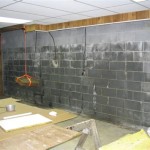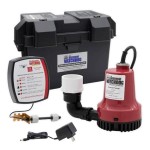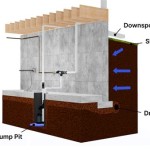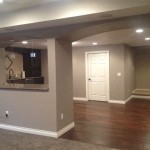Transforming your basement into an entertaining space with a stylish basement bar can significantly enhance your home’s functionality and value. Whether you’re planning a basement remodel or looking to optimize an already finished basement, incorporating a bar area creates the perfect spot for entertaining guests or unwinding after a long day. From rustic charm to sleek modern designs, there are countless basement bar ideas to inspire your project. In this guide, we’ll explore 15 basement bar ideas that will inspire you to create the perfect entertainment hub in your home.
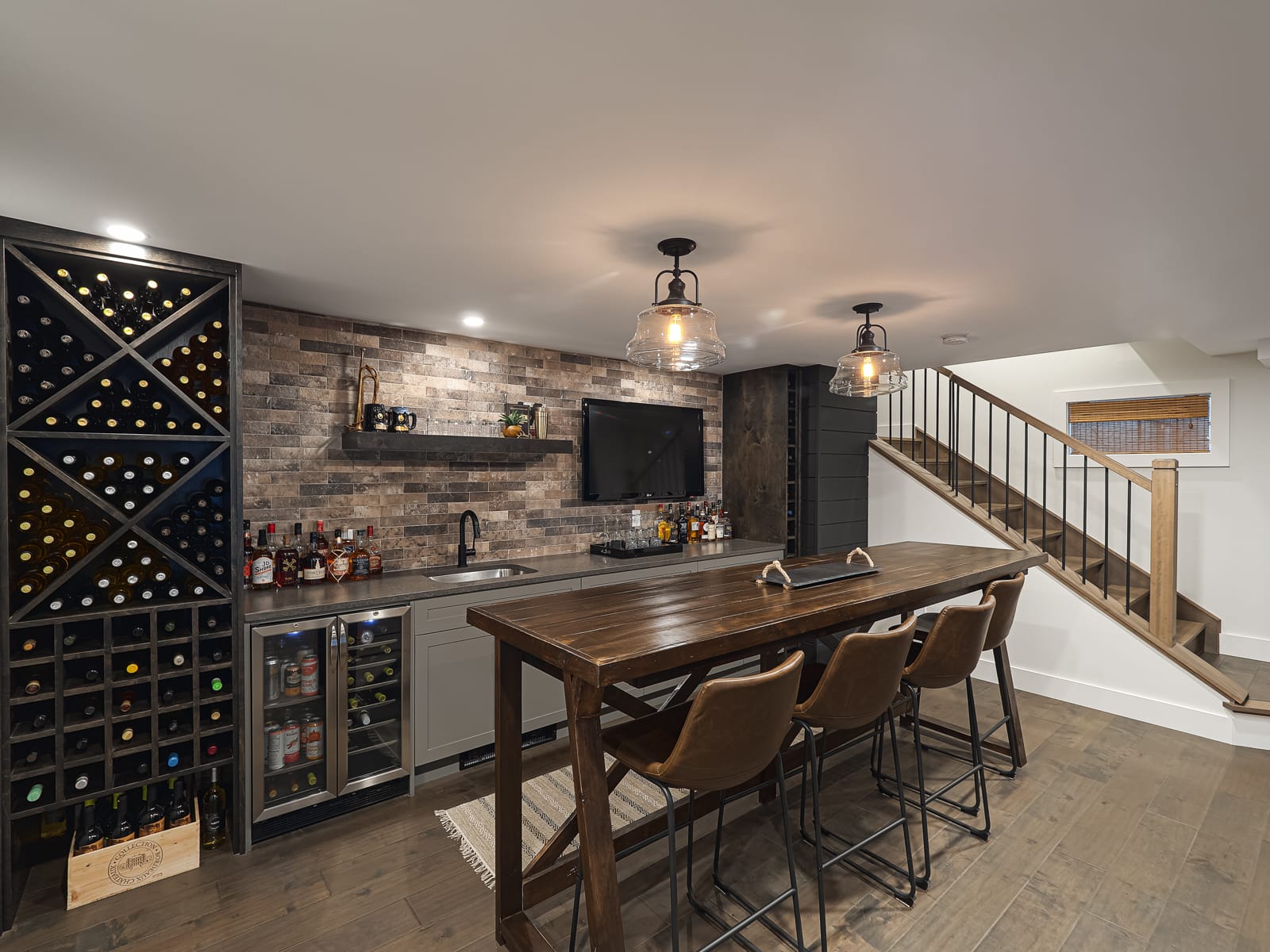
What are the best basement bar ideas for different sized spaces?
The size of your basement space plays a crucial role in determining the most suitable bar design. Whether you’re working with a small basement or a spacious area, there are creative solutions to maximize your bar space and create a functional entertaining area that meets your needs. The key is to assess your basement dimensions realistically and design a bar that fits proportionally within the available basement space, ensuring comfortable traffic flow and optimal functionality.
How can I design a bar for a small basement space?
When working with a small basement, efficient design becomes paramount. Consider installing a compact small basement bar along one wall to maximize the available space. Corner bars are particularly effective in small basements as they utilize often unused areas while creating a focal point. Floating shelves installed above the bar counter provide storage for glassware without consuming valuable floor space. A narrow bar counter with 2-3 bar stools can create an intimate seating area without overwhelming the room. Consider using glass or mirrored backsplash materials to reflect light and create the illusion of more space. For extremely limited areas, a portable bar cart offers flexibility, allowing you to move your bar setup as needed for different occasions. Utilizing vertical space with tall, narrow cabinetry maximizes storage while maintaining a small footprint, perfect for those looking to make your basement bar both functional and space-efficient.
What layouts work best for large basement bar areas?
A large basement provides the luxury of exploring more elaborate bar designs. Consider an L-shaped or U-shaped bar layout that creates a dedicated serving area while providing ample seating. Island bars that allow access from all sides work exceptionally well in spacious basements, creating a natural gathering spot similar to a commercial establishment. With generous basement space, you can incorporate multiple zones—perhaps a main bar area complemented by a lounge with comfortable seating or a game room featuring a pool table. Full-size wet bars with comprehensive cabinetry, wine storage solutions, and perhaps even a small refrigerator or dishwasher become viable options. Consider installing a large bar counter that accommodates 6-8 bar stools for maximum entertaining capacity. For a truly luxurious finished basement bar, you might even allocate space for a dedicated wine cellar adjacent to the main bar area, creating a comprehensive entertainment complex. Large basements also allow for statement design elements like a dramatic chandelier or accent wall behind the bar to create visual interest.
How to create a functional basement wet bar in limited space?
Creating a functional wet bar in a limited basement space requires strategic planning and smart design choices. Opt for a galley-style layout where the wet bar runs along a single wall, making efficient use of the available area. Incorporate a small bar sink that provides the necessary functionality without consuming excessive counter space—corner sinks can be particularly space-efficient. Consider using compact under-counter refrigerators and ice makers that fit neatly beneath the bar counter. Implement a combination of closed cabinetry for storing less attractive items and open shelving for displaying attractive glassware and cocktail equipment. Wall-mounted wine racks can save valuable counter space while keeping bottles accessible. When selecting materials, light-colored countertops and clean lines help the space feel larger and more open. Multi-functional elements, such as a bar top that extends slightly to create an eating area, maximize utility in small spaces. Consider sliding cabinet doors that don’t require swing space for opening. With careful planning, even the smallest basement can accommodate a highly functional wet bar that enhances your entertaining capabilities without feeling cramped.
How to design a wet bar for my finished basement?
A wet bar elevates your basement from a simple recreation space to a comprehensive entertaining area. Unlike a dry bar, a wet bar includes plumbing fixtures that allow for convenient drink preparation and cleanup without trips to the kitchen. When planning a wet bar for your finished basement, you’ll need to consider not just aesthetics but also practical elements like water supply, drainage, and appropriate materials that can withstand moisture. The investment in proper plumbing infrastructure pays dividends in convenience and functionality, making your basement bar a truly self-contained entertainment zone.
What are the essential components of a wet bar?
A proper wet bar in your basement requires several key components to function effectively. First and foremost is a bar sink—typically smaller than a kitchen sink but sufficient for washing glasses and preparing cocktails. Complementing this should be proper plumbing connections, including hot and cold water lines and a drainage system. Under-counter refrigeration is essential for keeping beverages cold without trips upstairs, with options ranging from dedicated wine coolers to beer refrigerators or multi-purpose units. Storage cabinetry specifically designed for barware is crucial, with properly sized compartments for different types of glassware, cocktail tools, and bottle storage. Consider incorporating a dedicated ice maker if you entertain frequently, eliminating the need for ice trays or trips to the kitchen. A dishwasher—even a compact model—can be invaluable for cleanup after larger gatherings. Countertop space for drink preparation should be ample and made from water-resistant materials like granite, quartz, or sealed concrete. Proper lighting is essential, typically featuring a combination of task lighting for drink preparation and ambient or accent lighting for atmosphere. Finally, electrical outlets strategically placed for blenders, coffee makers, or other small appliances complete the functionality of a well-designed basement wet bar.
Should I include a sink in my basement bar design?
Including a sink in your basement bar design transforms it from a simple serving area to a fully functional wet bar, offering significant advantages for serious entertainers. A sink provides immediate access to water for mixing drinks, rinsing glassware, and cleaning up spills without trips to another floor. This convenience becomes particularly valuable during larger gatherings when frequent trips to the kitchen would be disruptive. From a practical standpoint, having a sink allows you to wash sticky residue from cocktail preparation immediately, preventing countertop damage and maintaining cleanliness. Bar-specific sinks are typically smaller than kitchen models, with dimensions around 15″ x 15″, conserving valuable counter space while providing necessary functionality. Copper and stainless steel are popular materials for basement bar sinks, offering durability and distinctive style that complements various design aesthetics from rustic to sleek modern. While adding a sink does increase the complexity and cost of your basement bar project due to necessary plumbing work, most homeowners who include this feature consider it an indispensable element that significantly enhances the bar’s utility and convenience.
What plumbing considerations are needed for a basement wet bar?
Installing plumbing for a basement wet bar requires careful planning and potentially significant work depending on your home’s existing infrastructure. The primary consideration is access to water supply lines—you’ll need to tap into existing cold and hot water pipes, which may require opening walls or ceilings to reach. Drainage presents a particular challenge in basements, as standard gravity-based systems require the drain to be higher than the sewer line, which isn’t always possible below grade. If your basement floor is below the sewer line, you’ll likely need to install an ejector pump system to move wastewater upward to the main drain. Proper venting of the plumbing system is essential to prevent sewer gases from entering your home and ensure efficient drainage. Consider installing a water filtration system specifically for your bar sink if your home’s water has taste issues or mineral content that might affect cocktail quality. Shut-off valves dedicated to the bar area are advisable for maintenance and emergency situations. Waterproofing around all plumbing installations is critical in basement applications to prevent leaks that could cause significant damage. If your basement isn’t already finished, installing plumbing before completing walls and flooring is significantly easier and less expensive. Finally, check local building codes regarding basement plumbing installations, as many jurisdictions have specific requirements for below-grade plumbing that may require permits and inspections.
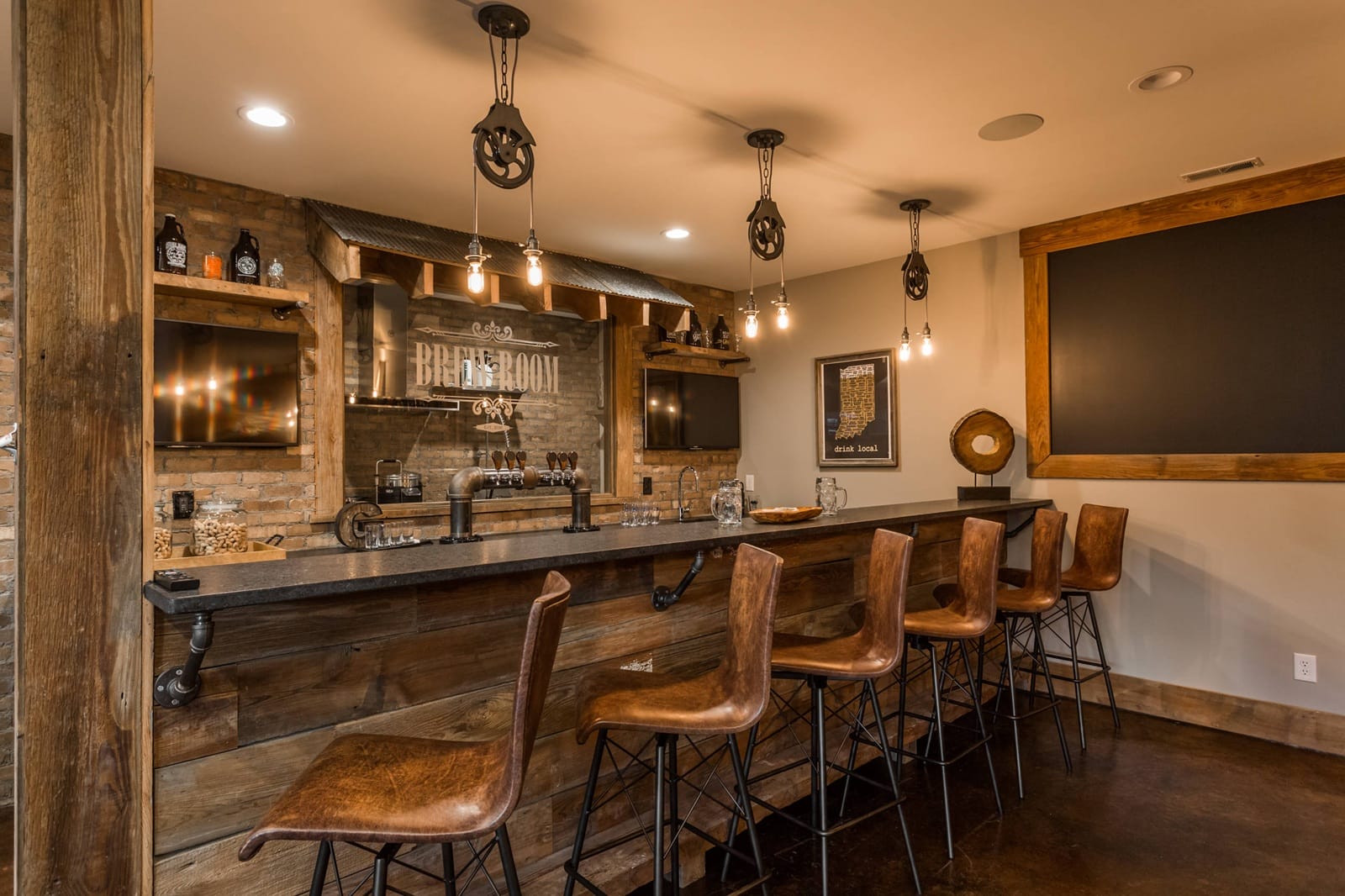
What are popular basement bar cabinet and shelving options?
Storage solutions are the backbone of a functional basement bar, providing both practical organization and aesthetic appeal. The right combination of cabinetry and shelving not only keeps your bar essentials organized but also serves as a major design element that defines your bar’s style. From traditional closed cabinets that conceal clutter to dramatic open shelving that showcases your finest bottles and glassware, your storage choices significantly impact both the functionality and visual appeal of your basement bar area.
How to incorporate open shelving in my basement bar design?
Open shelving has become increasingly popular in basement bar designs, offering both practical storage and aesthetic display opportunities. Floating shelves mounted directly to the wall create a modern, airy appearance while providing space for glassware, decanters, and special bottles. Consider using reclaimed wood for the bar shelving to add warmth and character, particularly effective in rustic or industrial-inspired bar designs. Glass shelves with proper lighting can create a dramatic display effect, especially when backlit to showcase bottle silhouettes. For maximum impact, arrange shelving in asymmetrical patterns rather than strict horizontal alignments, creating visual interest that draws the eye. Mixing open shelving with closed cabinetry provides the perfect balance between display space and concealed storage for less attractive necessities. When installing open shelves, ensure they’re mounted securely to support the weight of bottles and glassware—reinforcement is often necessary in drywall applications. Consider the depth carefully; shelves should be deep enough to accommodate bottles but not so deep that items get lost in the back. Strategic placement of LED strip lighting underneath shelves creates dramatic accent lighting while improving functionality. For an industrial look, combine metal brackets with wood shelving, or for a sleek modern aesthetic, consider matte black metal shelving with minimal supports. Whatever style you choose, open shelving transforms ordinary storage into a defining design element of your basement bar.
What are the best cabinet materials for a basement bar?
Selecting the right cabinet materials for your basement bar involves balancing durability, moisture resistance, aesthetic appeal, and budget considerations. Solid wood cabinetry remains a popular choice, with oak, maple, and cherry offering excellent durability and timeless appeal. For a rustic basement bar, consider cabinets made from reclaimed wood, which provides unique character and environmental benefits. If moisture is a concern in your basement environment, marine-grade plywood with waterproof finishes offers exceptional resistance to humidity. High-quality MDF (medium-density fiberboard) with proper sealing provides a smooth surface ideal for painted finishes at a lower cost than solid wood. For contemporary basement bar designs, consider cabinets with high-gloss lacquer finishes or thermofoil, which provide sleek, clean lines and excellent durability. Metal cabinets, particularly stainless steel or powder-coated options, offer industrial chic appeal and outstanding durability against spills. For those seeking unique materials, consider incorporating glass-front cabinet doors to display special glassware collections or backlit panels for dramatic effect. In recent years, bamboo has gained popularity as a sustainable cabinet material that provides a distinctive look while offering good moisture resistance. Whatever material you select, ensure it’s properly sealed to withstand the inevitable splashes and spills that occur in active bar environments.
How to design a bar cabinet that maximizes storage?
Designing bar cabinetry that maximizes storage requires thoughtful planning focused on the specific items you’ll need to accommodate. Consider incorporating dedicated wine storage sections with diagonal slots or a built-in wine rack to hold bottles properly. Install adjustable shelving within cabinets to customize heights for various glassware types, from tall beer glasses to short whiskey tumblers. Vertical dividers can efficiently organize serving trays, cutting boards, and bar menus. Drawers with custom inserts keep bar tools organized and easily accessible—consider felt-lined options for protecting higher-end implements. For serious entertainers, integrated trash and recycling pullouts discreetly manage disposal needs. Specialized cabinetry might include a dedicated liquor cabinet with locking mechanisms if security is a concern, particularly in homes with children. Toe-kick drawers utilize otherwise wasted space beneath base cabinets for rarely used items or backup supplies. Corner cabinets with lazy susan mechanisms make excellent use of potentially awkward spaces. Consider incorporating a built-in ice bucket or champagne chiller for frequent entertainers. Under-counter refrigerator cabinets with proper ventilation keep beverages at ideal serving temperatures. For compact spaces, consider cabinets with doors that slide rather than swing open. Many homeowners repurpose kitchen cabinets during kitchen renovations, offering high-quality cabinetry for basement bars at significant savings. With strategic planning and custom organization solutions, even modest bar cabinetry can provide extraordinary storage efficiency.
What basement bar design ideas work for different styles?
Your basement bar should reflect your personal aesthetic while creating a welcoming atmosphere for entertaining. From weathered wood and industrial accents to sleek surfaces and sophisticated finishes, the design style you choose sets the tone for the entire space. The best basement bars successfully blend functional requirements with cohesive design elements that complement your home’s overall character while perhaps offering a distinct experience that makes descending into your basement an exciting transition into a special environment.
How to create a rustic basement bar?
Creating a rustic basement bar centers around incorporating natural materials and weathered finishes that evoke a warm, inviting atmosphere. Start with a bar counter featuring reclaimed wood for the bar top—barn wood, old flooring, or salvaged timbers all provide authentic character with unique patina and grain patterns. Stone elements, whether as a bar front façade or a statement backsplash, add textural interest and natural variation. Consider distressed cabinetry with intentionally worn finishes or actual vintage cabinets repurposed for bar storage. Incorporate metal accents with an aged appearance—wrought iron, copper, or bronze elements in light fixtures, cabinet hardware, or decorative features complement the rustic aesthetic perfectly. Open shelving made from thick wooden planks supported by industrial-style brackets provides both storage and visual interest. For bar stools, look for options with leather seats, visible joinery, or even repurposed tractor seats for authentic farmhouse charm. Lighting plays a crucial role—consider iron chandeliers, Edison-style bulb fixtures, or repurposed items like old lanterns converted to pendant lights. A stone or brick accent wall behind the bar area creates dramatic visual impact. Decorative elements might include vintage signage, antique bar tools, or historical photographs related to spirits or your local area. The color palette should emphasize earthy tones—warm browns, deep reds, forest greens, and natural neutrals—that complement the natural materials. With thoughtful material selection and attention to authentic details, your rustic basement bar will create a timeless, comfortable atmosphere that invites relaxation and conversation.
What elements make a modern basement bar design?
A modern basement bar design emphasizes clean lines, minimalist aesthetics, and contemporary materials that create a sophisticated entertaining space. Start with a streamlined bar counter featuring sleek materials like polished concrete, engineered quartz, or waterfall-edge natural stone in neutral tones. Cabinet fronts should feature flat panels without ornate details, often in high-gloss finishes or matte treatments—handleless push-open mechanisms maintain the clean aesthetic. Consider a monochromatic color scheme punctuated with strategic accent colors, perhaps through colorful glassware displays or a bold backsplash. Lighting is crucial in modern design—incorporate recessed ceiling fixtures for ambient illumination complemented by minimalist pendant lights featuring geometric shapes or sleek materials like brushed nickel or matte black. Open shelving with hidden mounting hardware creates the appearance of floating storage, particularly effective when illuminated with LED strip lighting. Bar stools should feature clean silhouettes in materials like molded plastic, bent metal, or leather with slim profiles that tuck neatly under counter overhangs. Glass backsplashes—particularly back-painted options in bold colors or large-format tiles with minimal grout lines—create sleek, easy-to-clean surfaces. Consider incorporating smart technology like programmable LED lighting systems, temperature-controlled wine storage, or integrated audio systems controlled via smartphone. For a truly contemporary touch, a glass-front refrigerator displays beverages while adding visual interest. The overall effect should feel uncluttered and intentional, with every element serving both functional and aesthetic purposes in a cohesive design that emphasizes space, light, and clean geometry.
How to design a lounge-style basement bar?
A lounge-style basement bar prioritizes comfort and conversation while maintaining sophisticated drink service capabilities. Begin by creating distinct zones that flow together—a proper bar area with seating complemented by a comfortable seating arrangement featuring plush sofas, deep armchairs, and perhaps a chaise lounge arranged to facilitate conversation
Related Posts
